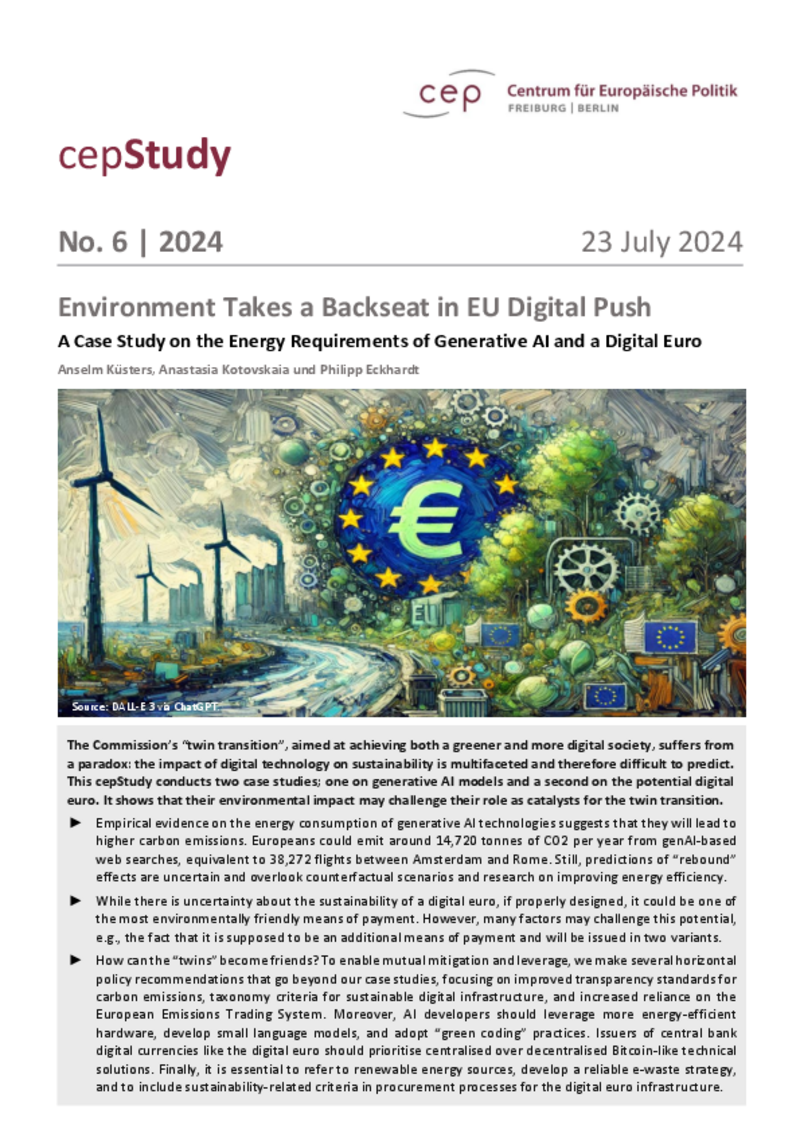
Digital Economy
Environment Takes a Backseat in EU Digital Push
cepStudy
"The environmental impact in terms of energy consumption and carbon emissions is immense, not only in the training phase but also in the application phase of modern generative AI models," says cep AI expert Anselm Küsters, who conducted the study with cep digital experts Anastasia Kotovskaia and Philipp Eckhardt. This is due in no small part to the growing size of data centres and the resource-intensive nature of chip production.
According to the study, internet searches using generative AI alone could increase CO2 emissions in Europe by at least 14,720 tonnes per year in the medium term. This is equivalent to taking 38,000 flights between Amsterdam and Rome. There is also still a lot of uncertainty about the sustainability of the digital euro. "If designed correctly, it could be one of the most environmentally friendly means of payment," says cep researcher Eckhardt. However, this potential advantage depends on many factors, such as whether it is an additional means of payment or whether the digital euro is issued in two variants - online and offline.
Overall, the results of the study point to an "uncomfortable dilemma", explains Anastasia Kotovskaia. In order to reduce the environmental impact of digital solutions, it is crucial to increase transparency about carbon emissions and energy consumption. AI developers should use more energy-efficient hardware, develop small language models and use "green" coding methods. In the case of the digital euro, centralised rather than decentralised technical solutions such as Bitcoin should be preferred.
Download PDF
| Environment Takes a Backseat in EU Digital Push (publ. 07.23.2024) | 2 MB | Download | |
 | |||





